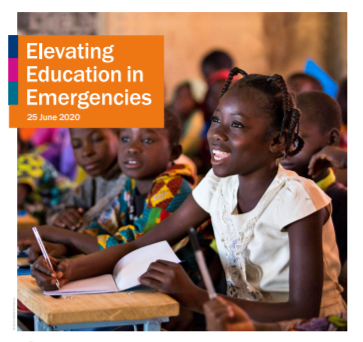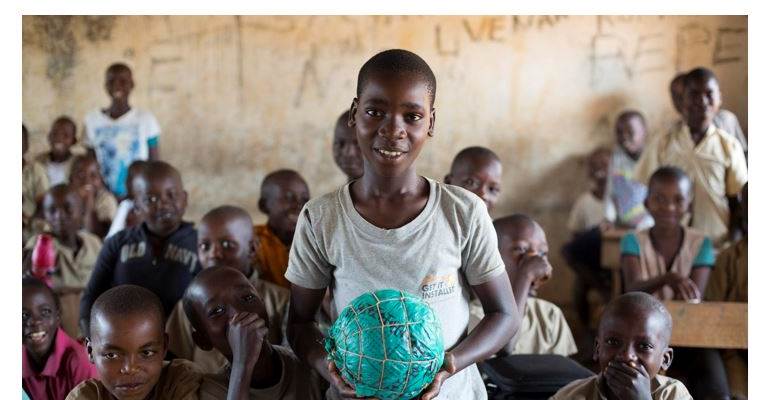The Elevating Education in Emergencies (EEiE) series, organized by the Global Education Cluster, Permanent Mission of Switzerland to the UN and Permanent Mission of Norway to the UN, has sought to galvanize increased attention for, and advocate for the prioritization of, education in humanitarian responses.
The series, comprised of four High Level Meeting, ran from 2018-2020. The meetings unpacked distinct thematic issues by bringing together practitioners from diverse country, regional and global contexts. Read more on the dedicated EEiE webpage: https://www.educationcluster.net/EEiE
Below are speaking points by Ambassador and Permanent Representative of Norway to the UN in Geneva Mr Hans Brattskar, held at the fourth and final meeting on 25 June 2020.
"Elevating Education in Emergencies: Securing Uninterrupted Learning for Crisis-affected Children"
Excellencies, ladies and gentlemen, partners and friends.
I am very pleased to welcome you all to this fourth and final meeting in our series on elevating education in emergencies. We are glad to be with all our partners who share our agenda of increased support to education in emergencies.
The topic of today is how to ensure better education outcomes through closer cooperation and coordination between humanitarian and development actors. Education is firmly placed right in the nexus, providing both immediate protection and education gains, and facilitating longer-term development and societal gains.
I’m therefore glad to see both humanitarian and development actors in today’s meeting as we need the competence and the tools of both in order to ensure uninterrupted education and learning.
Education is a key priority for the Norwegian government. Funding for girls’ education, education in emergencies, vocational training as well as quality learning are particularly high on our agenda. It is not enough that children are enrolled, it is important that they learn.
Good teachers and quality teaching are key in order to reach the SDG 4 on education. Equally important is an inclusive approach. In line with the SDG principle of leaving no-one behind, we have a specific focus on marginalised groups, including children with disabilities. Unfortunately, after years of progress, we have recently seen a stagnation. We need to step up our joint efforts in order to achieve SDG 4 by 2030 – including in crisis and emergencies.
Reflecting on the impact of our meeting series, it is clear to me that today education is higher on the humanitarian agenda than a few years back. There is increased understanding of both the importance of education in emergencies, and of the tools needed to ensure continuation of education.
The substantive papers that have been, the discussions we have had and the meeting reports, provide useful input for all education actors, including both organisations and governments. Still challenges persist – for example in having education recognised as an essential service, as we have seen during the ongoing pandemic.
Our very first meeting focused on protection. Going to school protects children from, for example, recruitment by armed groups, forced labour and early marriage. And we need to protect schools in times of crisis and conflict in order to ensure continuation of education, thereby achieving both short-term and long-term effects for children, young people, their families and societies.
At the second meeting we discussed cash-based interventions. Linking cash in emergencies with social protection schemes can help build bridges between humanitarian assistance and long-term development.
And at our third meeting we had a panel discussion with only local actors – those present before, during and after an emergency who are key to ensuring continuity. We need to take an integrated approach in order to strengthen the capacity of local actors to act in an emergency, using both humanitarian and development funding.
In a way, all of this leads up to our discussion today which has highlighted more than ever the value of coordination and cooperation in order to ensure uninterrupted learning. I am glad that this, our final meeting, has also focused on some practical examples to see what can be done in practice to meet the education rights of children.
As others have said, the ongoing pandemic has brought home to all of us across the world some of the challenges children and their families meet in emergencies, and the importance of continued learning. As always, emergencies exacerbate existing inequalities. We must keep this in mind as we work both to ensure continued learning during the pandemic, and also to get children back to school when they reopen, in particular girls and children with various vulnerabilities.
Allow me to offer a few personal reflections as I now come to the end of my four years as Norway’s ambassador and permanent representative in Geneva. One of the topics which I have enjoyed most working on is protection of children. We have put protection of children at the centre of our efforts in several ways, let me give you a few examples.
First of all, of course, through this meeting series. We have also organised several other events with partners on protection of children, including the Child Protection cluster and a number of other organisations.
I would also like to mention our work on universalisation and implementation of the Safe Schools Declaration where we have seen a lot of progress in the support for protecting schools and education from military use and attack. At the very first meeting of this series in June 2018 I mentioned that 75 states had by then endorsed the declaration. Today – we are at 104.
On 9th July, together with the Global Coalition to Protect Education from Attack and other partners, we plan to launch this year’s report on education under attack and I encourage you to participate to learn even more about these challenges, and the practical impact of the Safe Schools Declaration.
Another example is that through Norway’s presidency of the Mine Ban Convention last year, we put specific emphasis on protecting children through better mine risk education and reduction. One of the actions States Parties agreed to was to integrate mine risk education activities with wider humanitarian, development, protection and education efforts. We have seen several good examples of this in the past few months.
Looking toward the next couple of years: As you might know, last week Norway was elected to a seat at the UN Security Council for the period 2021-2022. In this role, Norway will give special priority to efforts to strengthen the protection of civilians, including children, and to promote women’s role and participation in international peace and security work.
Finally I would like to thank those who have made this series of meetings on education in emergencies possible. Our cooperation with the Swiss mission has been excellent, and we hope that we can continue working together to enhance support for education in emergencies.
I would especially like to thank the colleagues in the Global Education Cluster; Maria Agnese, Anthony and Thorodd. It has been such a pleasure for me and my colleagues at the mission and at the Ministry of Foreign Affairs to work with you, and we have been impressed by your dedication and your professionalism. I would also like to thank in particular the head of the humanitarian team at our Mission, Ingunn Vatne, for the dedicated efforts you have put into making this series the success it has been. This would not have been possible without you.
Thank you.
Related resources:
See more on YouTube: https://www.youtube.com/playlist?list=PLiLynGgd7urpx-1fYzDkHNEeq_kfnzSxk
EEiE website: https://www.educationcluster.net/EEiE

